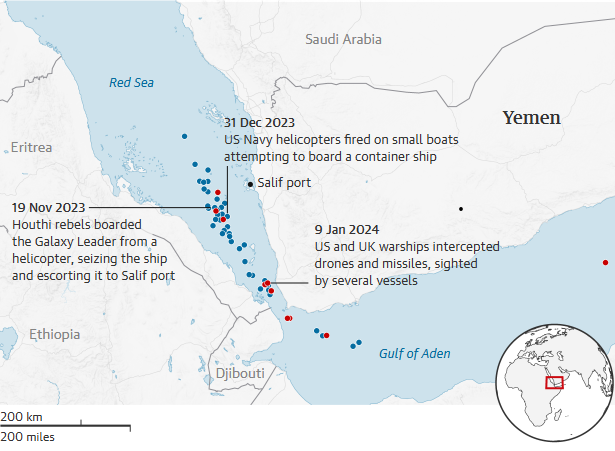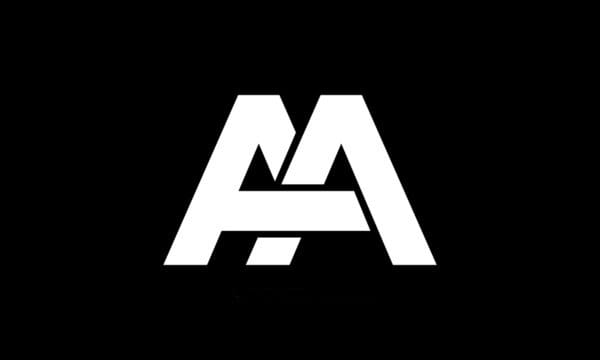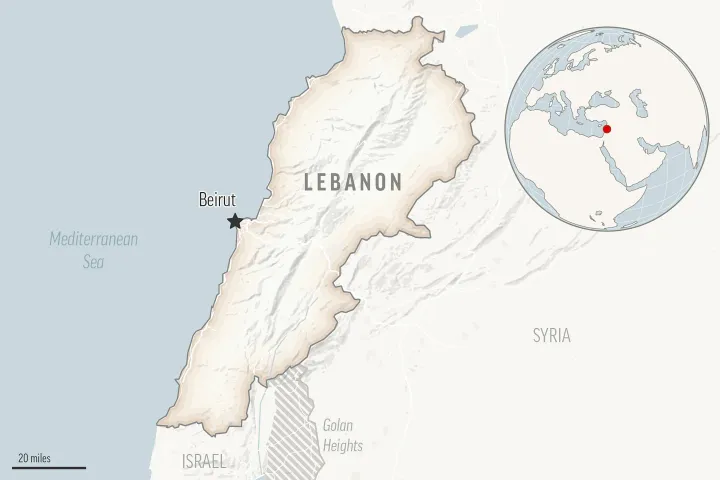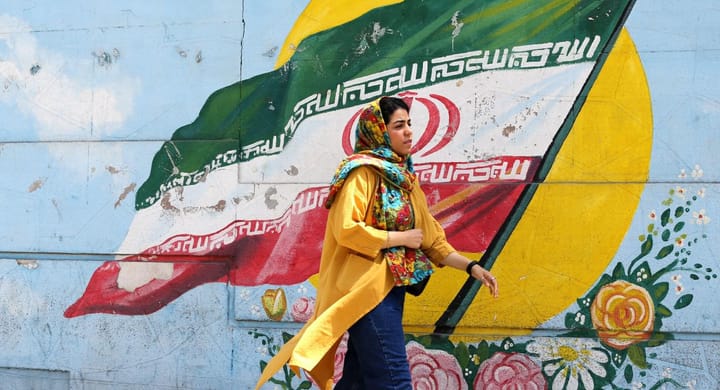Iran’s Liability for the Houthis’ Ballistic Missile Attacks
The US is currently pursuing the Houthis directly. However, Iran bears a vicarious liability for arming the group. The armed attacks can potentially escalate into direct attacks on Iranian vessels, unless an Iran limits the group.

· Summary: Whoever armed the Houthis with ballistic missiles is liable for their actions in the Red Sea and attacks on American vessels.
· The chain of causation of arming the Houthis with ballistic missiles, points to Iran, thereby making them vicariously liable under international law.
· At the moment, the US is treating the Houthis as “enemies of all states”. However, if it escalates, Iran could be held accountable.
· It is, therefore, in Iran's best interest to ask the Houthis to stop firing ballistic missiles as they wish or face direct consequences for the Houthis' actions.
Introduction
The Houthis are a relatively small, but influential group controlling most of western Yemen. They have an estimated population of some 100,000 and 20,000 fighters[1]. Their populist message, premised on simple Islamic ideas and supported by the easy distribution of arms to willing fighters from modest backgrounds has expanded their authority in most of western Yemen. Although the group denies being funded by Iran or any external power, the group possesses long-range missiles that they have fired at Saudi Arabia (2019) and nations in the region[2]More significantly, they have attacked ships from a wide range of states in the Gulf of Aden and Red Sea, which are international shipping routes.
This article examines Iran’s liability for the Houthis’ actions in the Red Sea and West Asia region at large. Can Iran be held accountable for arming the Houthis? What is the legitimacy of the Houthis for the damage they cause? And what is the implication of the Houthis’ actions under international law?
As a country, Yemen is far from developing ballistic missiles. Yemen is one of the poorest countries in the world. It is ranked the tenth poorest in the world and is poorer than Somalia, Sierra Leone, Afghanistan, and Chad[3]. Based on Yemen’s location and potential, it could have been far richer and more advanced if there was peace and state-building consensus. However, the country is in the perpetual grips of war.
After 2016, Yemen’s only international airport was closed for many years[4]. Based on the conditions in the country, Yemen is not in a position to develop and manufacture ballistic long-range missiles.
Ballistic missiles are somewhat complicated in their development and it was only recently that a few states in the region acquired them.
Many anti-ballistic missile treaties seek to limit states from developing long-range missiles. In 2015 the UN Security Council issued renewed restrictions on Iran's ballistic missile development programs[5].
However, this did not prevent Iran from developing these missiles and showcasing them in many of their parades.
Iran’s Link to the Houthis
Iran's leaders repeatedly cite a collective group of militias in West Asia as the "Axis of Resistance". They remain vague about it, but it is officially known that Hezbollah, the Assad regime, and Hamas defended heavily and sometimes exclusively on Iranian armament.
Experts estimate that the Houthis started gaining support from Iran in 2009, during their first war against Yemen’s government[6]. By 2014, the Houthis were receiving weapons from Iran and it was through these weapons that they captured the capital, Sanaa. The Saudi-led military intervention to save the Yemeni government in 2015 naturally ignited Iran’s interest in supporting the Houthis.
The Houthis’ ideological view aligns really well with the original mindset that ignited the Iranian Revolution in 1979. It is premised on populism and activism backed by militancy. Thus, the link between the two groups continued for the past decade. This included weapons transfer and intelligence sharing. Ultimately, the Houthis launched attacks on Saudi oil infrastructure, cementing their link with Iran.
In January 2024, the US intercepted shipments of Iranian military aid en route to the Houthis[7]. This shows the ideological and military link that exists between Iran and the Houthi.
Vicarious Liability under International Law
The nation-state remains the primary actor under International Law.
States are directly accountable for their actions if they emanate from the head or senior officials. However, there are various non-state actors that can operate in the name of specific states.
In the past, pirates were often licensed and supported by sovereign states as proxies for their wars against rival states.
However, there are accountability lines that can be established on the basis of the consequences of the actions of a connected non-state actor.
Vicarious liability occurs when a state actor is indirectly held accountable for the actions of a non-state entity that causes some damage or destruction[8].
For vicarious liability to be imputed on a state for the actions of a third party, they should have control over or authorize a specific act that causes damage. Thus, the state in question is forced to take responsibility for the actions of an affiliated entity or agent that caused damage.
In the process, there should be a sufficient link or relationship between the state being held accountable and the entity that committed the act at hand
Link between the Parties: There must be a sufficient link or relationship between the state and the entity whose actions are at issue[9].
Holding Iran Accountable for the Actions of the Houthis
In the past year and a half, the Houthis have fired at US warships 174 times and commercial vessels, some 145 times[10]. Attacks on US ships are a clear declaration of war, and the US can directly attack the Houthis.
However, based on the soft approach used by the Biden Administration, the Houthis did not come under strict firing.
On the second level, the 145 commercial vessels attacked by the Houthis in an international shipping lane raise a broader global concern. Five of the top 10 importers by value of trade through the Red Sea are European Union members[11]. This means the Houthis’ actions are a violation of international law in general.
As such, when one looks at the damage that continues to be done on the Red Sea, there is a clear case to hold the group and their backers, Iran, accountable.
Hence, actions against the Houthis are prone to escalation in the future.
The Trump Administration is at the First Stage of Vicarious Accountability – It Could Escalate
Clearly, a violation and damage to US military infrastructure has occurred from the Houthis.
At the moment, the Trump Administration is trying to settle scores with the Houthis directly. This has seen direct attacks against the Houthis in Yemen and other locations.
The US also has other options like pursuing the Peace Through Strength model and therefore arming local Yemeni groups and regional powers to pursue the Houthis.
On the other hand, the Houthis have a possibility of constantly co-opting and using the vast unpopularity of the US in the region. When this persists, Houthi attacks will continue and a more drastic action would be necessary.
Conclusion: The Next Stage Will Involve Direct Attacks on Iran
No one is in doubt that Iran was behind the attacks on Saudi oil installations via its Houthi proxies. Israel and Iran have also had their skirmishes and it is clear that Iran as a state is drawing closer to direct military confrontation.
Marco Rubio seems to be moving towards a level where Iran’s navy and commercial would come under direct attack around the world if the attacks do not stop[12]. That would put pressure on Iran to rein in the Houthis and limit their access to and use of ballistic missiles in the region.
That stage will come with a lot of violence and destruction. And it is in the best interest of Iran to get the Houthis to end their ballistic missile attacks. However, judging by the Houthis’ dependence on these attacks for their mobilization and consensus-building process, it is likely they would continue their attacks. This sets the stage for a massive showdown in Yemen and Iran in the months ahead. Iran can stop this by putting the Houthis in check.
[1] Archie Bland & Bethan McKernan. “Who are the Houthis and how did the US and UK strikes on Yemen come about?” The Guardian. Published: January 12, 2024. Available at: https://www.theguardian.com/world/2024/jan/12/yemen-houthi-rebels-who-are-they-what-attacking-us-uk-airstrikes-red-sea-crisis
[2] Wilson Center. Houthi Arsenal. Published: July 26, 2024. Available at: https://www.wilsoncenter.org/article/houthi-arsenal
[3] Global Finance. Top 10 Poorest Countries in the World. Published: May 6, 2024. Available at: https://gfmag.com/data/economic-data/poorest-country-in-the-world/
[4] Sultana Begum. “Five reasons why Yemen’s Sana’a airport must reopen.” Norwegian Refugee Council. Published: August 6, 2021. Available at: https://www.nrc.no/perspectives/2021/five-reasons-why-yemens-sanaa-airport-must-reopen
[5] United Nations Security Council. Ballistic missile-related transfers and activities. Available at: https://main.un.org/securitycouncil/en/content/2231/ballistic-missile-related-transfers-and-activities
[6] Kali Robinson. “Iran’s Support of the Houthis: What to Know” Council on Foreign Relations. Published: March 24, 2025. Available at: https://www.cfr.org/in-brief/irans-support-houthis-what-know
[7] Kali Robinson. “Iran’s Support of the Houthis: What to Know” Council on Foreign Relations. Published: March 24, 2025. Available at: https://www.cfr.org/in-brief/irans-support-houthis-what-know
[8] Alan O. Sykes & Eric A. Posner. “An Economic Analysis of State and Individual Responsibility under International Law” University of Chicago Coase-Sandor Working Paper Series in Law & Economics 2006 Available at: https://chicagounbound.uchicago.edu/law_and_economics/43/
[9] John Bell. “The Basis of Vicarious Liability” The Cambridge Law Journal 72 (1) 2013 Available at: https://www.cambridge.org/core/journals/cambridge-law-journal/article/abs/basis-of-vicarious-liability/59293FE6299FEB0A63F655272A5F2F77
[10] Landon Mion. “Houthis claim responsibility for strikes against US ships: report” Yahoo News. Published: March 26, 2025. Accessed: March 28, 2025. Available at: https://www.yahoo.com/news/houthis-claim-responsibility-strikes-against-050626386.html
[11] Landon Mion. “Houthis claim responsibility for strikes against US ships: report” Yahoo News. Published: March 26, 2025. Accessed: March 28, 2025. Available at: https://www.yahoo.com/news/houthis-claim-responsibility-strikes-against-050626386.html
[12] Landon Mion. “Houthis claim responsibility for strikes against US ships: report” Yahoo News. Published: March 26, 2025. Accessed: March 28, 2025. Available at: https://www.yahoo.com/news/houthis-claim-responsibility-strikes-against-050626386.html




